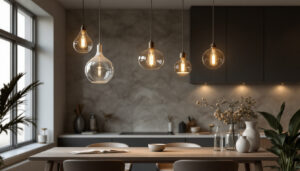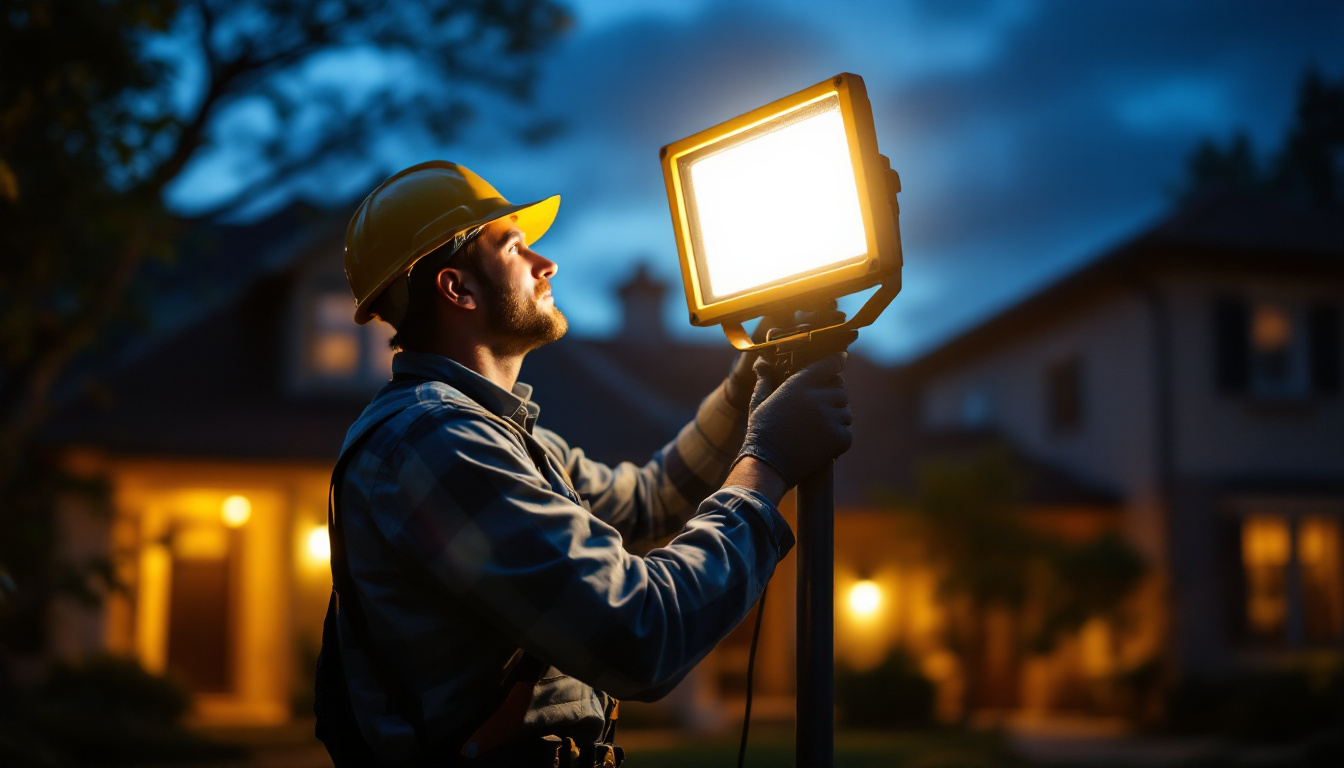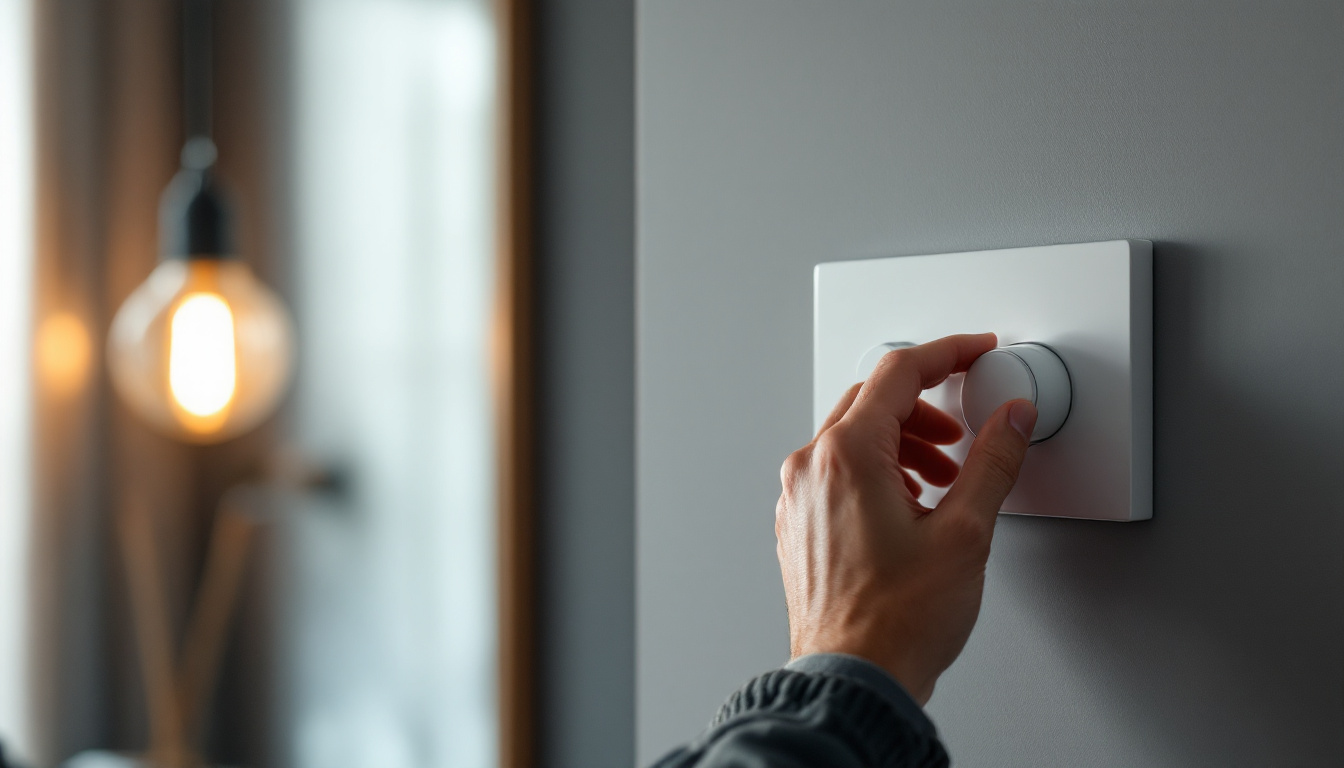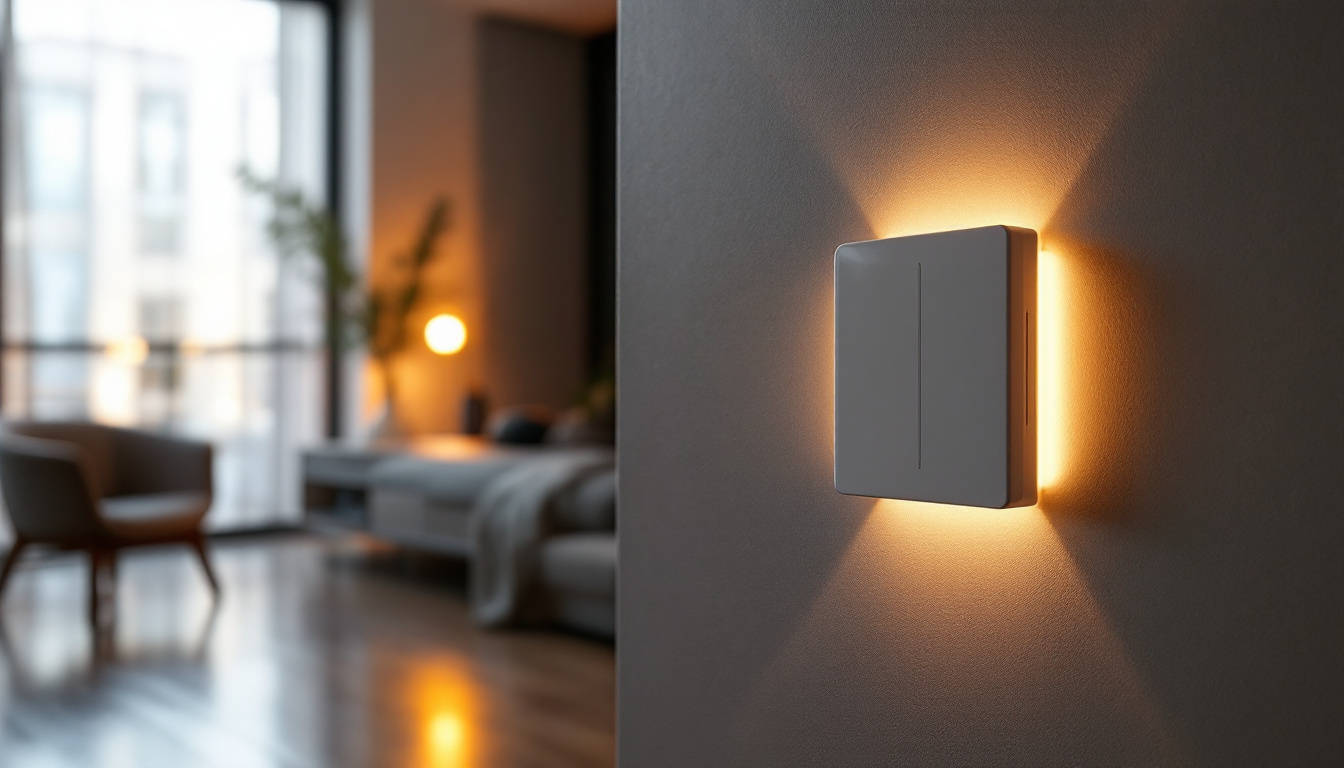

outdoor floodlights are essential tools for lighting contractors, providing both security and aesthetic enhancement to residential and commercial properties. This guide aims to equip lighting contractors with the necessary knowledge and insights to effectively select, install, and maintain outdoor floodlights, ensuring optimal performance and client satisfaction.
Outdoor floodlights are high-intensity lighting fixtures designed to illuminate large areas. They are commonly used for security purposes, highlighting architectural features, or enhancing outdoor spaces such as patios and gardens. Understanding the different types of floodlights available, as well as their applications, is crucial for any lighting contractor.
There are several types of outdoor floodlights, each with unique features and benefits. The most common types include LED, halogen, and metal halide floodlights. LED floodlights are energy-efficient and have a longer lifespan, making them a popular choice for many contractors. Halogen floodlights, while less energy-efficient, provide a warm light that is often preferred for residential applications. Metal halide floodlights offer high-intensity illumination and are frequently used in commercial settings.
When selecting a floodlight, it is essential to consider the specific needs of the project. For instance, LED floodlights are ideal for areas requiring prolonged use, while halogen lights may be better suited for short-term applications. Understanding the advantages and disadvantages of each type will help contractors make informed decisions. Furthermore, the choice of floodlight can also be influenced by factors such as color temperature, beam angle, and the presence of smart technology features, which can enhance both functionality and energy efficiency.
Outdoor floodlights serve various purposes, from enhancing security to creating ambiance. In residential settings, they can illuminate driveways, pathways, and patios, ensuring safety and usability during nighttime hours. In commercial environments, floodlights are often used to light up parking lots, building facades, and outdoor signage, providing visibility and deterring criminal activity.
Additionally, floodlights can be employed in landscaping to highlight trees, shrubs, and architectural features, adding depth and character to outdoor spaces. For example, strategically placed floodlights can create dramatic shadows and highlights that transform a simple garden into an enchanting evening retreat. Moreover, floodlights can also be integrated with motion sensors or timers, allowing for automated lighting solutions that enhance both security and convenience. Understanding these applications allows contractors to tailor their lighting solutions to meet the unique needs of each project, ensuring that every space is both functional and aesthetically pleasing.
Choosing the right floodlight involves several considerations that can significantly impact the effectiveness and efficiency of the lighting solution. Factors such as brightness, color temperature, beam angle, and energy efficiency should all be taken into account.
Brightness is measured in lumens, and selecting the appropriate lumen output is crucial for achieving the desired illumination level. For residential applications, floodlights typically range from 700 to 1,500 lumens, while commercial applications may require fixtures that produce 2,000 lumens or more. Understanding the specific lighting needs of the area being illuminated will guide contractors in selecting the right brightness level. Additionally, it’s important to consider how the floodlight’s brightness will interact with surrounding light sources, such as streetlights or architectural lighting, to create a balanced and harmonious environment.
Color temperature, measured in Kelvin (K), influences the ambiance created by outdoor floodlights. Warmer tones (2700K-3000K) are often preferred for residential settings, creating a cozy atmosphere. In contrast, cooler tones (4000K-5000K) are commonly used in commercial applications, providing a brighter, more clinical light that enhances visibility. Contractors should consider the intended use of the space when selecting the color temperature of floodlights. Furthermore, the choice of color temperature can also affect the perception of safety and security in outdoor areas; warmer lights may feel more inviting, while cooler lights can deter unwanted activity by illuminating spaces more effectively.
The beam angle of a floodlight determines how focused or dispersed the light will be. A narrow beam angle (less than 30 degrees) is ideal for highlighting specific features, such as architectural elements or landscaping, while a wider beam angle (greater than 60 degrees) is better suited for general area lighting. Selecting the appropriate beam angle is essential for achieving the desired lighting effect without creating harsh shadows or overly bright spots. Additionally, understanding the layout of the area being illuminated can help in determining the optimal placement and orientation of floodlights to maximize their effectiveness.
Energy efficiency is another critical factor in selecting floodlights, especially in a world increasingly focused on sustainability. LED floodlights are known for their low energy consumption and long lifespan, making them a popular choice for both residential and commercial applications. When evaluating energy efficiency, it’s important to consider not only the wattage of the floodlight but also its lumen output per watt, which indicates how effectively the light converts electricity into illumination. Investing in energy-efficient floodlights can lead to significant cost savings over time, as well as a reduced environmental footprint, aligning with modern energy conservation goals.
Proper installation of outdoor floodlights is critical to ensure safety, functionality, and longevity. Lighting contractors must adhere to best practices to achieve optimal results and minimize potential issues.
The placement and height of floodlights significantly affect their performance. For security lighting, floodlights should be positioned at least 8 to 10 feet above the ground to reduce glare and prevent vandalism. Additionally, placing lights at strategic points around the property can help eliminate dark spots and enhance overall visibility.
For landscape lighting, floodlights should be installed at varying heights to create depth and dimension. This approach allows for a more dynamic lighting effect, highlighting specific features while maintaining a balanced overall illumination.
When installing outdoor floodlights, it is essential to follow electrical codes and regulations. All wiring should be rated for outdoor use and properly secured to prevent damage from weather conditions. Contractors should also consider using weatherproof junction boxes and connectors to ensure the longevity of the installation.
It is advisable to consult with a licensed electrician when dealing with complex wiring or high-voltage systems. Ensuring that all electrical components are installed correctly will prevent future issues and enhance the safety of the lighting solution.
Regular maintenance is vital to ensure outdoor floodlights continue to operate efficiently and effectively. Lighting contractors should educate clients on the importance of maintenance and provide guidance on troubleshooting common issues.
Routine maintenance tasks include cleaning the fixtures, checking for loose connections, and inspecting the wiring for signs of wear or damage. Dust and debris can accumulate on floodlights, reducing their brightness and effectiveness. Regular cleaning with a soft cloth and mild detergent can help maintain optimal performance.
Additionally, contractors should recommend that clients periodically check the fixtures for any signs of corrosion or damage, especially in coastal areas where saltwater can accelerate wear. Addressing these issues promptly will extend the lifespan of the floodlights and ensure consistent performance.
Lighting contractors should be prepared to troubleshoot common issues that may arise with outdoor floodlights. One frequent problem is flickering or dimming lights, which may indicate a loose connection or a failing bulb. In such cases, checking the wiring and replacing the bulb can often resolve the issue.
Another common issue is the lights not turning on at all. This may be due to a tripped circuit breaker, a blown fuse, or a faulty photocell sensor. Contractors should guide clients on how to check these components and determine the appropriate course of action.
As energy efficiency becomes increasingly important, lighting contractors must consider sustainable practices when selecting and installing outdoor floodlights. Implementing energy-efficient solutions not only benefits the environment but can also lead to cost savings for clients.
LED floodlights are among the most energy-efficient options available, consuming significantly less energy than traditional halogen or metal halide lights. By opting for LED fixtures, contractors can help clients reduce their energy consumption and lower their utility bills. Additionally, many LED options have a longer lifespan, reducing the frequency of replacements and waste.
Contractors should also consider incorporating smart lighting solutions, such as motion sensors and timers, to further enhance energy efficiency. These features allow floodlights to operate only when needed, minimizing energy usage and extending the life of the fixtures.
Lighting contractors can promote sustainability by educating clients about the benefits of energy-efficient lighting and encouraging them to choose environmentally friendly options. Providing information on recycling old fixtures and bulbs can also contribute to sustainable practices within the industry.
By prioritizing energy efficiency and sustainability, contractors can not only enhance their reputation but also contribute positively to the environment and their clients’ long-term satisfaction.
Outdoor floodlights play a vital role in enhancing safety, security, and aesthetics for both residential and commercial properties. For lighting contractors, understanding the various types of floodlights, their applications, and best practices for installation and maintenance is essential for delivering high-quality lighting solutions.
By considering factors such as brightness, color temperature, and energy efficiency, contractors can tailor their services to meet the unique needs of each project. Moreover, promoting sustainability and educating clients on proper maintenance will ensure that outdoor floodlights continue to provide value for years to come.
In an ever-evolving industry, staying informed about the latest trends and technologies in outdoor lighting will empower contractors to excel in their field and deliver exceptional results for their clients.
Ready to elevate your lighting projects with the highest quality floodlights? Look no further than LumenWholesale, where we provide contractors with spec-grade lighting products at the best wholesale prices. Say goodbye to local distributor markups and hello to our extensive selection that meets rigorous industry standards. With LumenWholesale, you get the reliability and performance you need, coupled with the convenience of free shipping on bulk orders. Don’t compromise on quality or value; choose LumenWholesale for your lighting solutions. Wholesale Lighting at the Best Value is just a click away.

Discover why dimmer switches are a game-changer for lighting contractors.

Discover the latest advancements in solar outdoor lighting and why they are essential for modern lighting contractors.

Explore the essential role of dimmer switches in modern lighting design and why every lighting contractor should master their installation and functionality.

Discover why smart light switches are revolutionizing the lighting industry and what every contractor needs to know to stay ahead.
Get notified when NEW deals are released.
Optimize your budget with wholesale discounts.
Only top-quality, specification-grade lighting products.
No additional costs at checkout - what you see is what you pay.
We understand the unique needs of contractors.